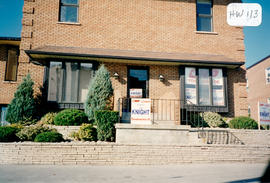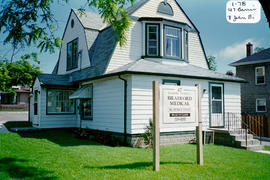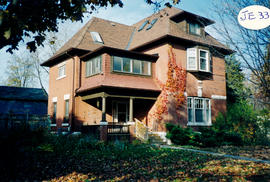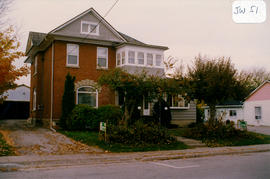92 Holland Street West - Bertha Sinclair's House
- CA BWGPL GJ-HB-2017-04-01-04
- Item
- 1996
Part of George Jackson fonds
Miss Sinclair’s House is a mid-block building located on the south side at 92 Holland Street West. It was built in the 1890’s in the Italianate style. Miss Bertha Sinclair lived in this house for many years. When she died, her nieces Kay and Isabel (daughters of Robert Spence) moved into the house. They were hairdressers. Isabel later moved and part of the house was rented to George and Ethel Stewart. The building was eventually sold to a real estate agent. The office of Dr. Fitzsimmons was also here at one time. Next to this structure was a vacant lot belonging to the Sinclair family. Many years ago there was a Temperance Hall and a church located there.
The two-storey, rectangular, main building has a single-storey, rear addition, a symmetrical façade, and a moderately-pitched, hip roof with a central chimney. The grand, Italianate scale is reflected in the large window openings, high floor to ceiling heights, and the large, 6/6 sash windows. There are deep, projecting eaves with ornately-decorated, paired cornice brackets and ‘false quoins’ (wood detailing meant to resemble masonry). The window cornices are exaggerated. According to the 2000 inventory, the stone foundation, wood frame construction, horizontal, wood-sided exterior finish (resembling masonry), and painted, exterior, wood trim are maintained well. (1, 2, 3).
George Jackson






